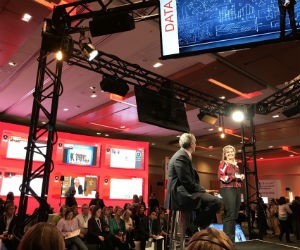Attracting attendees, exhibitors and sponsors has always been a top priority for association planners, whose organizations count on the revenue from annual events as a critical source of funding. But while the necessity of driving attendance and exhibitor/sponsor revenue may be as old as the associations themselves (and the greater industry), the digital world has transformed the art of attendee acquisition.
Following are 10 must-know trends from Leena Salamah, account strategist and executive director of Marketing Design Group (MDG), an association marketing company, presented during her “Future of Face2Face: The Future of Attendee Marketing” presentation at PCMA Convening Leaders 2018.
1. Shifting Attendee Attitudes: There’s been a change in perception around the importance of events, with people exiting organizations generally buying into annual meetings while newcomers see a world filled with other options, such as education and collaboration via digital channels. Your competition is not the traditional events that may compete with yours, but instead is “no convention at all.” Go back to selling the unique proposition of the event.
2. Breaking Down Silos: Anyone who has a role in an event has a role in attendee acquisition, such as sales bringing in exhibitors that attendees want to see. Attendee acquisition is much more than promotion. It’s not just a marketing job!
3. Data, Data, Data!: The amount of data we deal with seems overwhelming, discouraging many from even getting started analyzing it. You don’t need to get everything set up and perfect before you examine your data. Even data as simple as an IP address can provide valuable attendee-attracting information.
4. Customer Journey: The path to making a buying decision is part of everyone’s life, and it definitely exists in the attendee experience as well. People who’ve never heard of your event before don’t respond to a basic “Register Now!” call to action. Your call to action may stem from a white paper or blog posts, and not just a “Register Now!” button. You can push the conversation further by knowing what information your attendee prospects are after; they should happen in the world of mass-marketing that now exists.
5. Personalization: How prospects interact online will tell you how you can market to them, and as they respond to one thing, you can feed them something else that will continue their personal journey to deciding to attend.
6. Hearts and Minds: Marketing to business people is not much different than to consumers. Consumers have emotional connections to things. If you can tap into people’s emotions with their jobs, careers, etc., it’s much more effective than promoting, say, “Miles of Aisles!”
7. Real-Time: Remember the blackout during the 2015 Super Bowl? A savvy marketer for Oreo cookies used it as an opportunity to tweet out, “You can still dunk in the dark!” Take what’s happening currently and leverage it by being responsive. Since this was spur of the moment, there was no big corporate meeting before deciding to post the tweet, but rather someone who was empowered as long as they were on-brand. “That was kind of scrappy,” Salamah offered.
8. International: President Trump’s move to ban travel into the United States from targeted countries has resulted in decreasing in-bound travel to the U.S. Travel to the U.S. used to be a “perk” for international travelers, but the current environment is tough and confusing. You have to create that emotional, personal connection to overcome that barrier to traveling to the U.S. The European Union’s passage of the General Data Protection Regulation (GDPR) law and its far-reaching provisions for organizations doing business in the E.U. has resulted in converse stress on the outbound market.
9. Digital and Social: You don’t need to spend a boatload of money to have a successful digital/social campaign. You can now spend less money per impression through retargeting programs; budget is not as big of a factor as it was even a couple of years ago. Organic social is almost dead, however. Facebook continues to be very, very important, but its algorithms are not business-friendly. Paid social is the only way you’re going to reach the people you want to reach; check out Facebook Canvas, where you can tell more of your brand story in one place.
10. Video: It’s more than just reading content into a camera or testimonials; it has to have an emotional connection. We all love movie trailers, as they make us feel something; use real people engaging in face-to-face interactions, with an added layer of emotional relevance.







